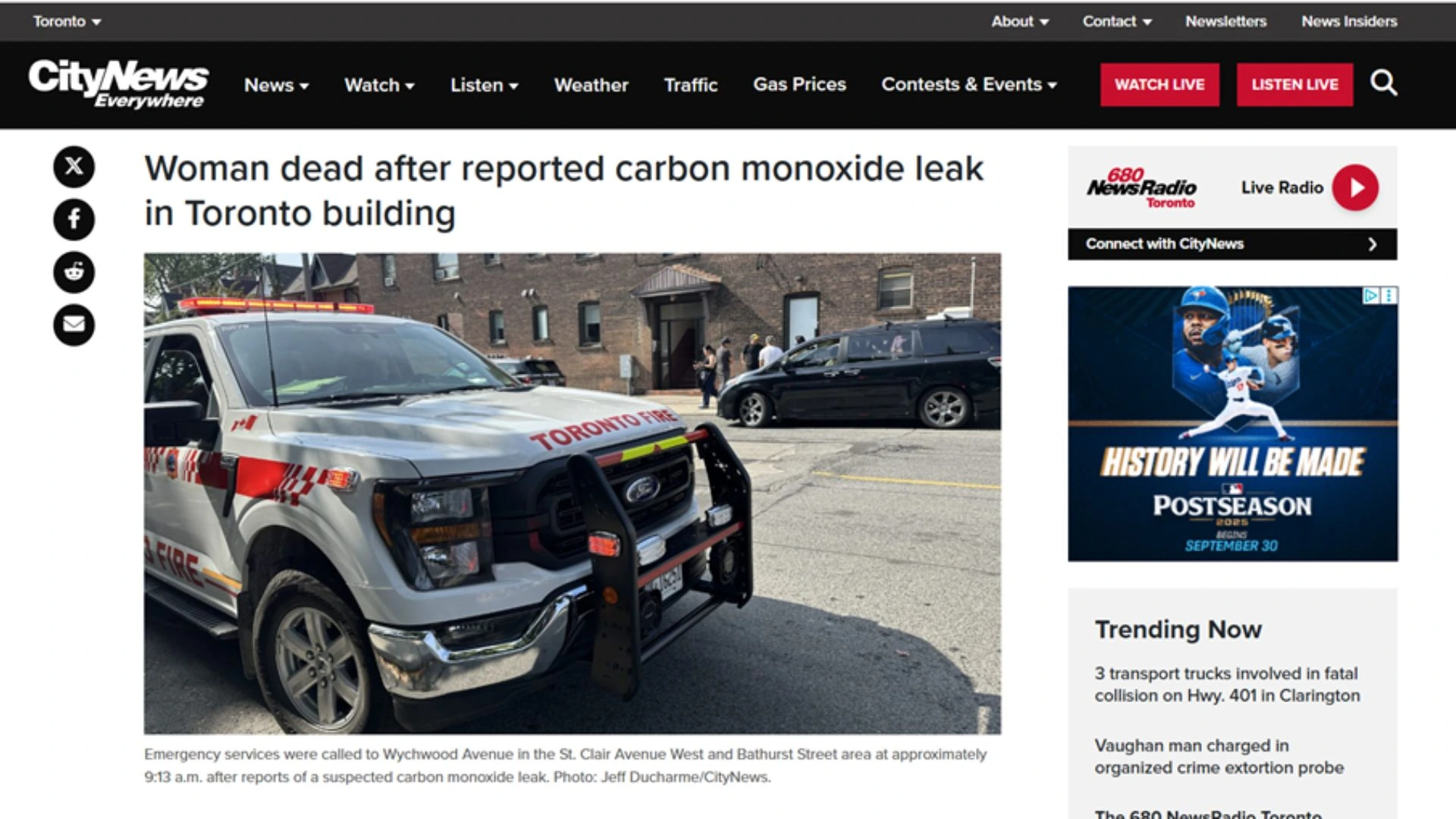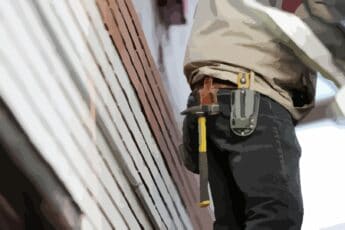
In September 2025, fire crews were called to a midtown Toronto apartment building after reports of a suspected carbon monoxide leak. One woman was found dead, and the building was evacuated while officials investigated the source of the gas. At the time of reporting, the coroner had not yet confirmed the exact cause of death.
Read News Here: Woman dead after reported carbon monoxide leak in Toronto building
This tragic event is a stark reminder that carbon monoxide (CO) safety and furnace maintenance are not optional. For landlords, neglecting heating systems can have devastating human consequences, create legal exposure, and threaten the long-term value of an investment property.
Understanding the Furnace
A furnace is the core of a home’s heating system. In most Toronto rentals, furnaces run on natural gas or propane. When they burn fuel, they generate heat — but also combustion byproducts such as carbon monoxide.
A properly functioning furnace vents these gases safely outdoors. But if the system is poorly maintained, damaged, or blocked, carbon monoxide can leak into living spaces. A furnace is not just about comfort; it’s a potential safety hazard if ignored.
The Silent Danger of Carbon Monoxide
Carbon monoxide is often called the “silent killer.” It has no smell, color, or taste, so tenants cannot detect it on their own. Even low levels of exposure can cause headaches, dizziness, fatigue, and nausea. Higher exposure may lead to confusion, unconsciousness, or death — sometimes within hours.
The danger is that symptoms often resemble flu or food poisoning, causing delays in seeking help. By the time people realize something is wrong, it can be too late.
How Carbon Monoxide Affects the Body
When carbon monoxide is inhaled, it binds to hemoglobin in the blood far more strongly than oxygen does. This forms carboxyhemoglobin, which reduces the body’s ability to transport oxygen. Without enough oxygen, cells and organs begin to fail.
Early signs include headache and fatigue; continued exposure can lead to confusion, chest pain, and eventually loss of consciousness. Long-term, low-level exposure can cause lasting neurological or cardiovascular damage.
Why Furnace Maintenance Matters for Landlords
Landlords in Ontario are legally obligated to provide safe, habitable housing. A poorly maintained furnace can quickly compromise that obligation. Beyond the moral duty to keep tenants safe, there are practical reasons to stay proactive.
Legal and financial liability can arise if a tenant becomes sick or injured due to a neglected furnace. Insurance claims can be denied, lawsuits can follow, and emergency repairs are always more expensive than planned maintenance. A well-serviced furnace also runs efficiently, reduces energy bills, and extends its lifespan — saving owners money over time.
Finally, reliable heat and a sense of safety help retain good tenants. Few things drive renters away faster than feeling unsafe or ignored when it comes to essential systems.
When to Inspect Your Furnace
The best time to inspect a furnace is fall — right before the heavy winter heating season begins. This timing ensures the system is safe and fully functional before it’s needed most. It also allows professionals to spot wear, corrosion, or blockages that may have developed over the summer while the system sat idle.
A proper inspection should include carbon monoxide testing, checking the heat exchanger and venting, examining airflow and filters, and identifying any early warning signs of failure. Waiting until mid-winter can leave you scrambling for emergency service when technicians are busiest and costs are higher.
Our Approach to Furnace Safety
At Landlord, furnace safety is non-negotiable. If a property owner declines this critical safety step, we often cannot take on management as the liability is too high and the risk unacceptable. In addition to the actual furnace inspection undertaken by a third-party licensed technician, we also require that the fire safety devices (smoke and carbon monoxide alarms) are inspected annually.
We’ve seen firsthand how proactive care prevents emergencies, protects tenants, and saves owners thousands in unexpected costs. Safety isn’t an add-on; it’s a fundamental part of responsible property management.
Bottom Line
The Toronto carbon monoxide tragedy is a powerful reminder: a furnace isn’t just a source of heat — it’s a potential safety risk if ignored. Regular inspection and carbon monoxide testing save lives, protect your property, and reduce liability.
Here at LandLord, we make furnace safety effortless for landlords. When we manage your property, our team coordinates all proactive fall maintenance and compliance checks to keep tenants safe and properties protected. Contact us today to ensure your rental is not just warm, but safe and worry-free.
FAQ
Are Yearly Residential Furnace Inspections Worth It?
Yes. Annual furnace inspections are one of the most cost-effective ways to protect a rental property. They help prevent unexpected breakdowns, improve energy efficiency, extend the system’s lifespan, and — most importantly — detect dangerous carbon monoxide leaks early. For landlords, this means fewer emergency calls, lower long-term costs, and reduced legal risk.
How Often Should You Do a Furnace Inspection?
A furnace should be inspected at least once every 12 months. Many property managers — including us at LandLord — recommend scheduling this in the fall, just before the heating season begins. This timing helps catch issues early and avoid costly emergencies when cold weather hits. Always follow the guidance and recommendations of a licensed technician.
What Do Licensed Technicians Check During a Furnace Inspection?
Licensed technicians don’t just change the filter when they inspect a furnace. Their checklist typically includes testing for carbon monoxide leaks and safe venting, examining the heat exchanger for cracks or corrosion, checking airflow and duct connections, inspecting electrical and gas components, and verifying system performance and efficiency.



